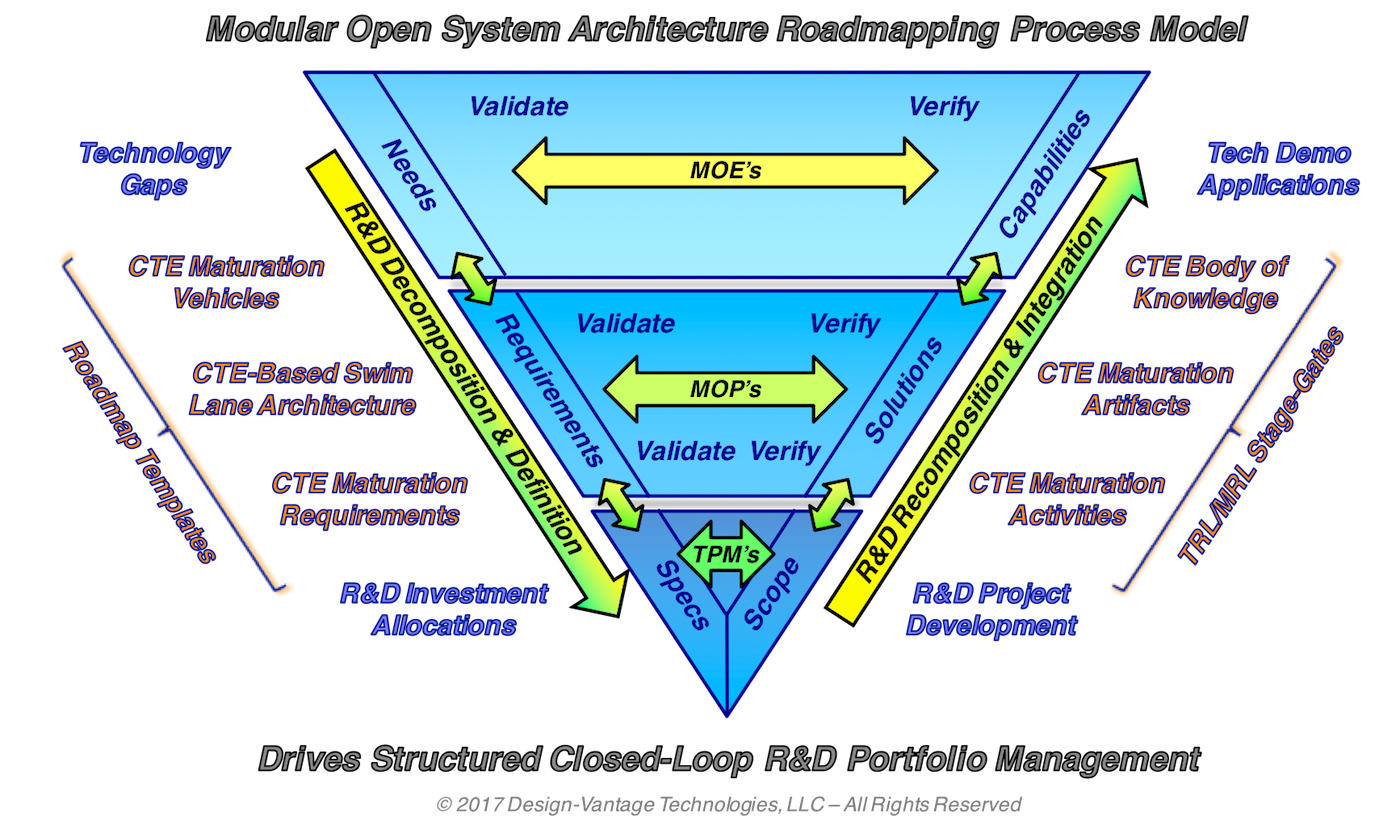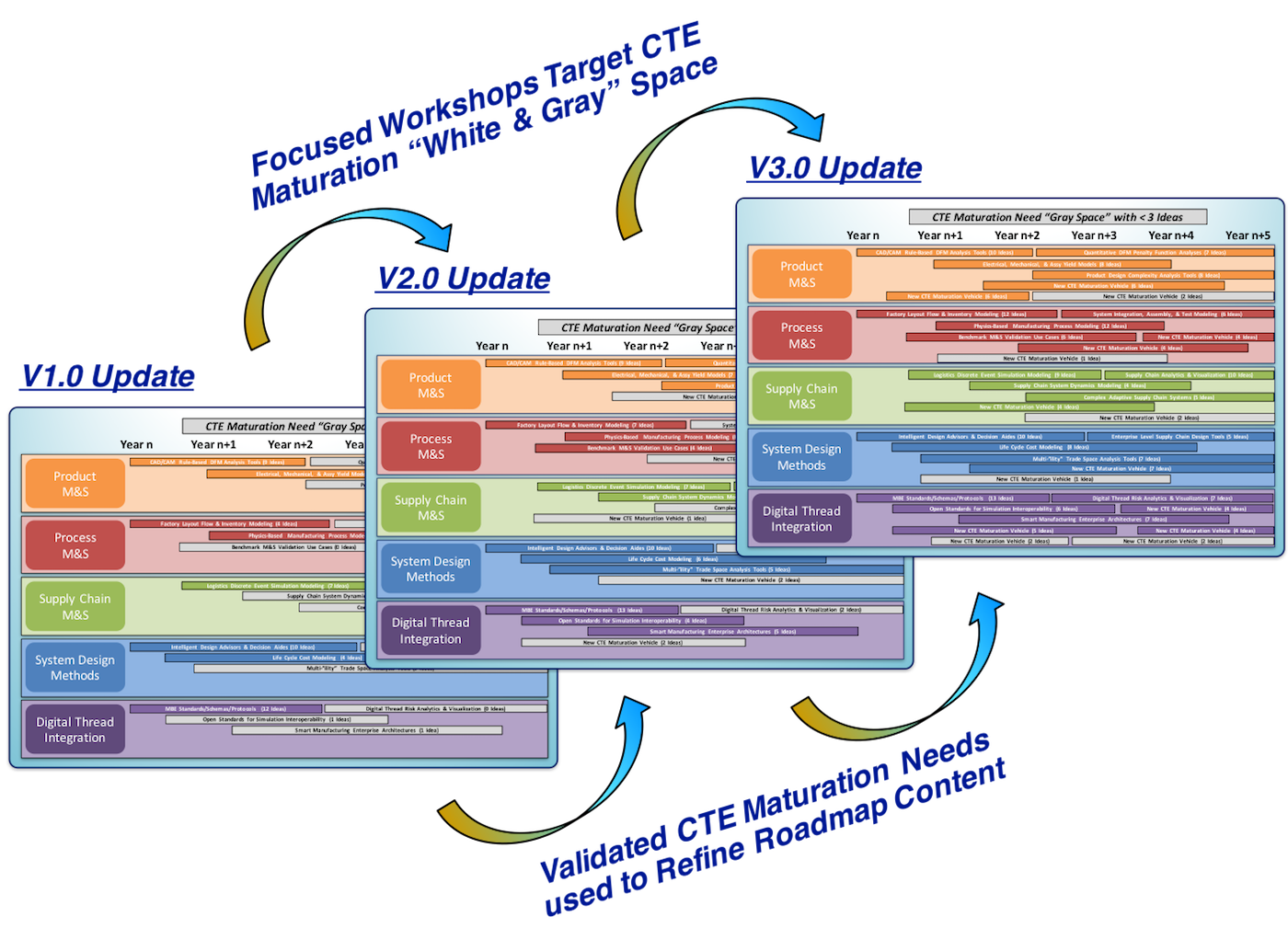Design-Vantage Roadmapping Process
Our technology roadmapping process provides a structured approach to developing customized technology roadmap templates using proven systems engineering based (SE-based) practices. In our approach critical technology element (CTE) maturation vehicles form the basis of the roadmap templates and link individual technology development activities in a modular open manner. This enables each project to incrementally advance the same common CTE’s, thereby eliminating the “point solution” problems inherent in complex multi-stakeholder multi-technology roadmaps.
Our SE-based roadmap process involves developing a set of hierarchical technology roadmap templates to systematically refine the technical focus areas where capability advancements to address technology gaps are needed. Tier one defines the roadmap swim lanes or top level focus areas where technology advancements are needed, with the CTE’s mapped to these swim lanes. Tier two enables high-level CTE maturation needs to be captured that define the desired future state capabilities that are identified during roadmap workshops. And tier three enables the CTE maturation needs to be decomposed into well-defined CTE maturation requirements using proven SE-based requirements analysis techniques.
A hierarchical set of SE-based flow down measures are also developed as part of the technology roadmap template development process that can be utilized to quantify the impact that alternative CTE maturation ideas have on advancing the overall roadmap mission objectives. These functionally linked measures of effectiveness (MOE's), measures of performance (MOP's), and technical performance measures (TPM's) enable quantitative trade-offs between roadmap gap closure ideas and also help drive a focus around closing roadmap gaps without solutions versus "ad hoc" brainstorming inherent in most roadmapping approaches.
Design-Vantage Roadmapping Benefits
Our unique SE-based technology roadmapping process offers several benefits over typical affinity grouping based roadmapping processes. The technology roadmap templates makes it easy to visualize roadmap “white space” (areas where there are no gap closure ideas) and ”gray space” (areas where there are only a few gap closure ideas). It is also easy to see when workshop gap closure ideas start clustering around a handful of CTE’s, which is common in affinity grouping based roadmapping approaches. And when this happens it is usually a sign that follow-on workshops are needed to engage additional subject matter experts in the gap closure brainstorming.
The structured SE-based process also helps harness and focus the creative energy of the workshop attendees, and enables workshops to be designed around closing targeted gaps versus soliciting “big ideas” that may or may not advance the roadmap mission. The flow down measures are also not conventional metrics, but rather are designed to help define specific areas where “out-of-the-box” gap closure ideas are needed. These flow down measures take the emotion out of the ideation process and avoid the pitfalls of ”no idea is bad” brainstorming.
Our SE-based roadmapping process can be used to create entirely new technology roadmaps or map your existing roadmaps to the new hierarchical technology roadmap templates we work with you to develop. Our unique SE-based technology roadmapping approach also enables roadmap analytics to be utilized to measure roadmap evolution and refinement over time as the templates are populated (e.g., number CTE maturation vehicles, number of CTE maturation ideas, elimination of "white and gray space", etc.), which turns your roadmap into a data-driven strategic planning and budgeting tool.




